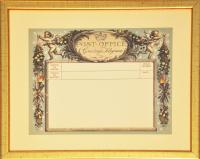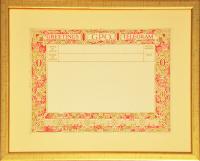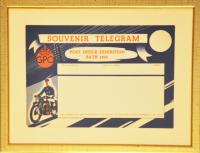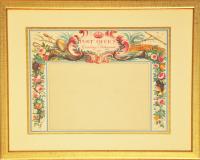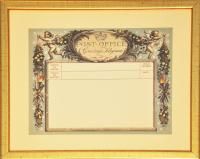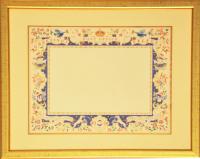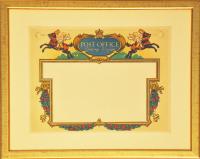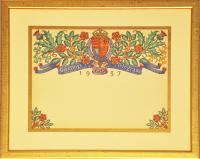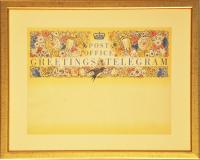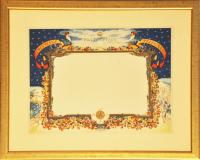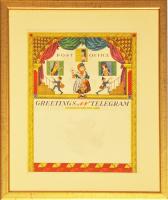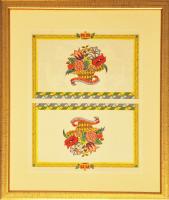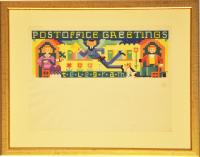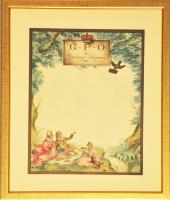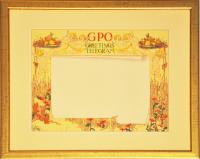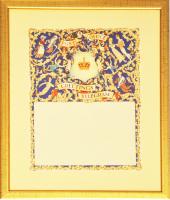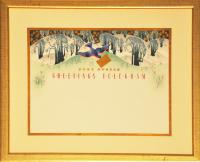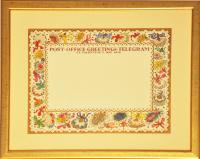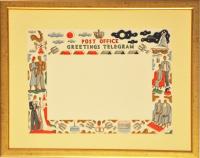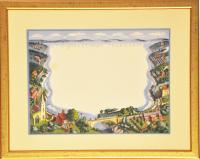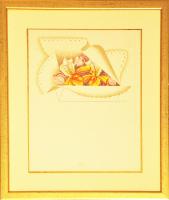
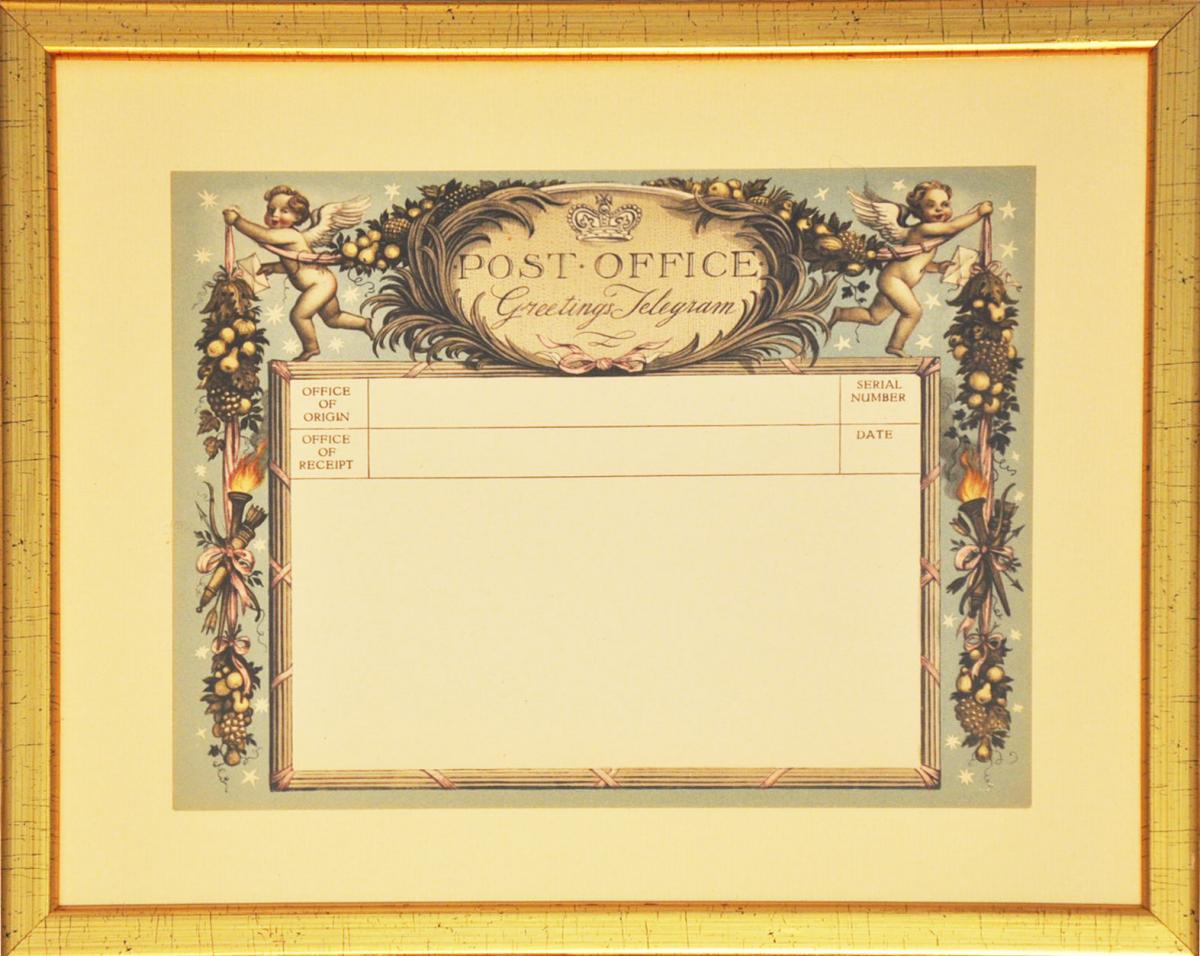
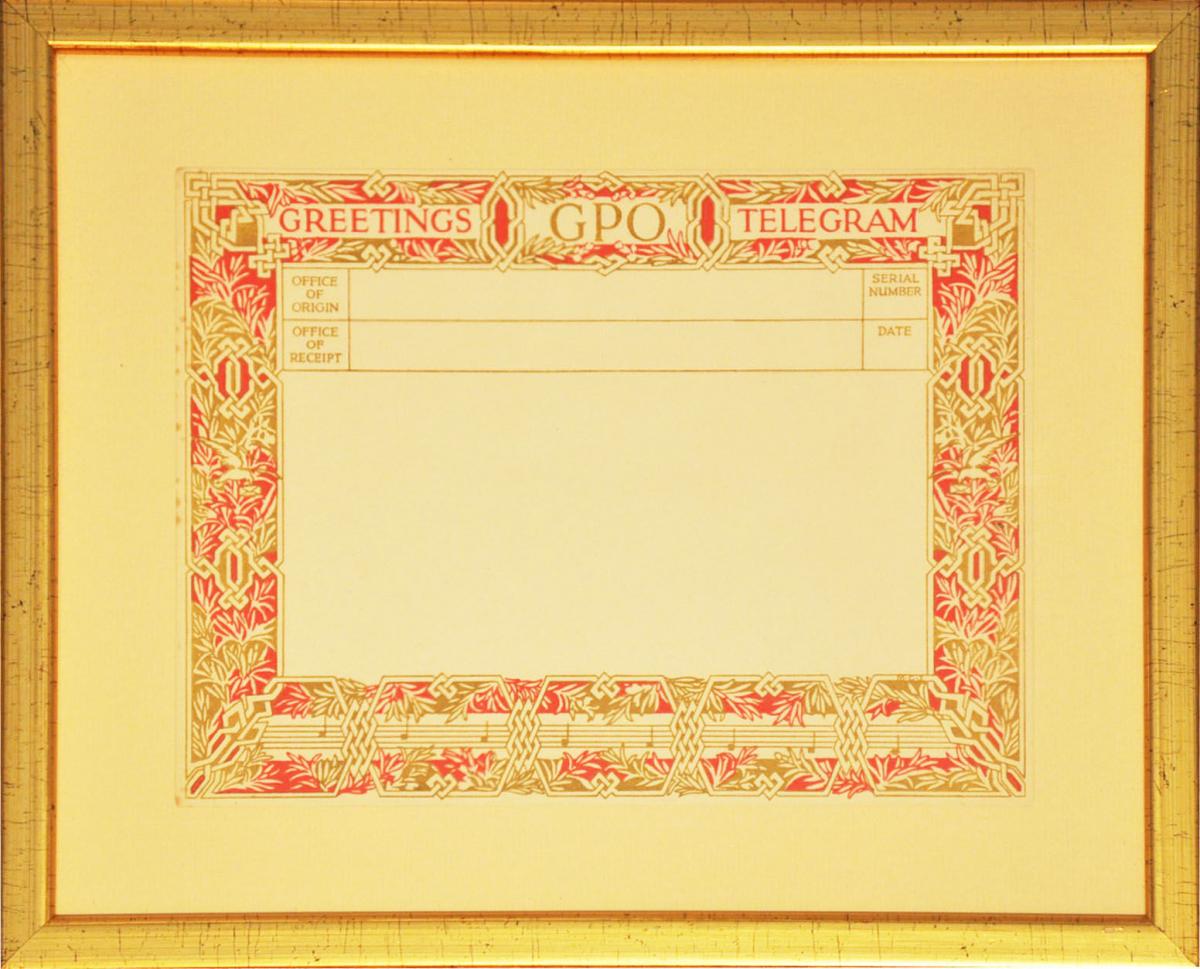
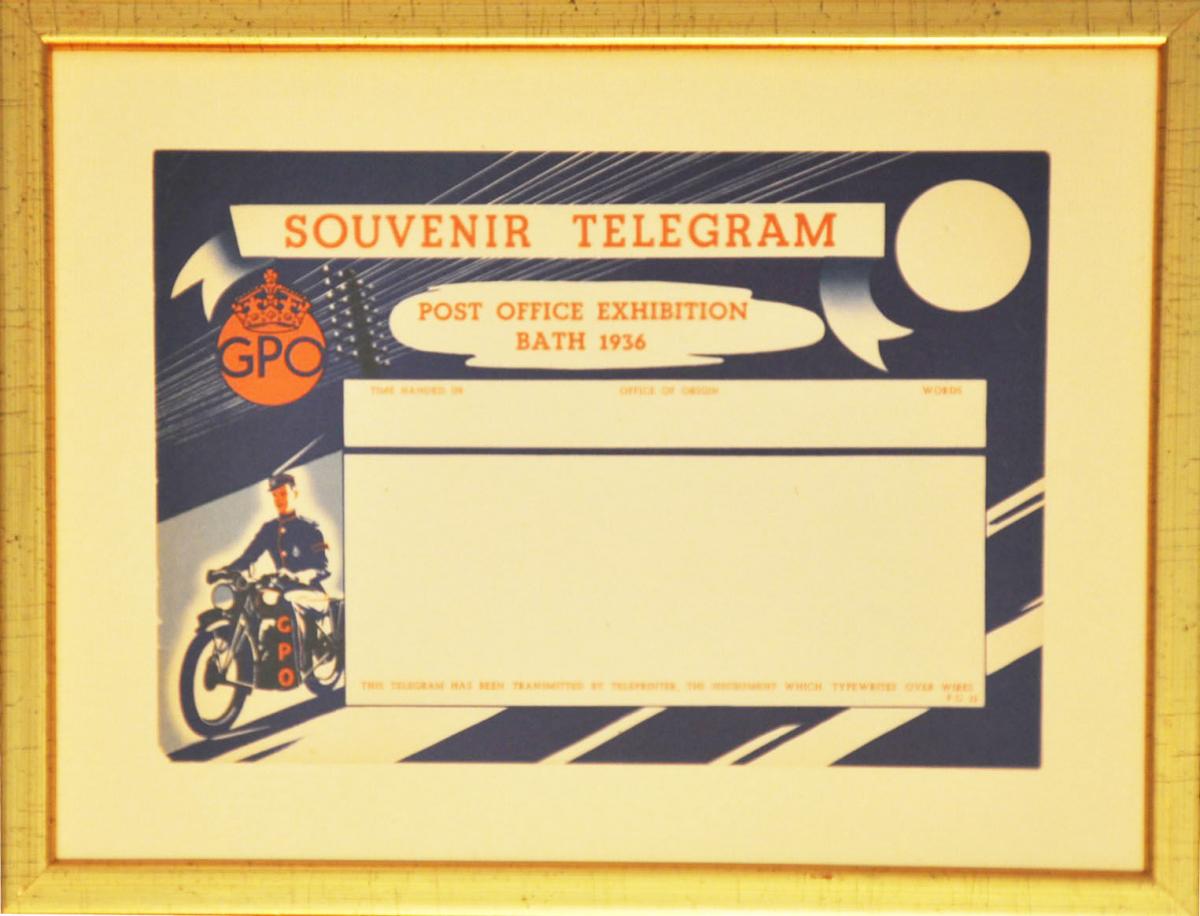
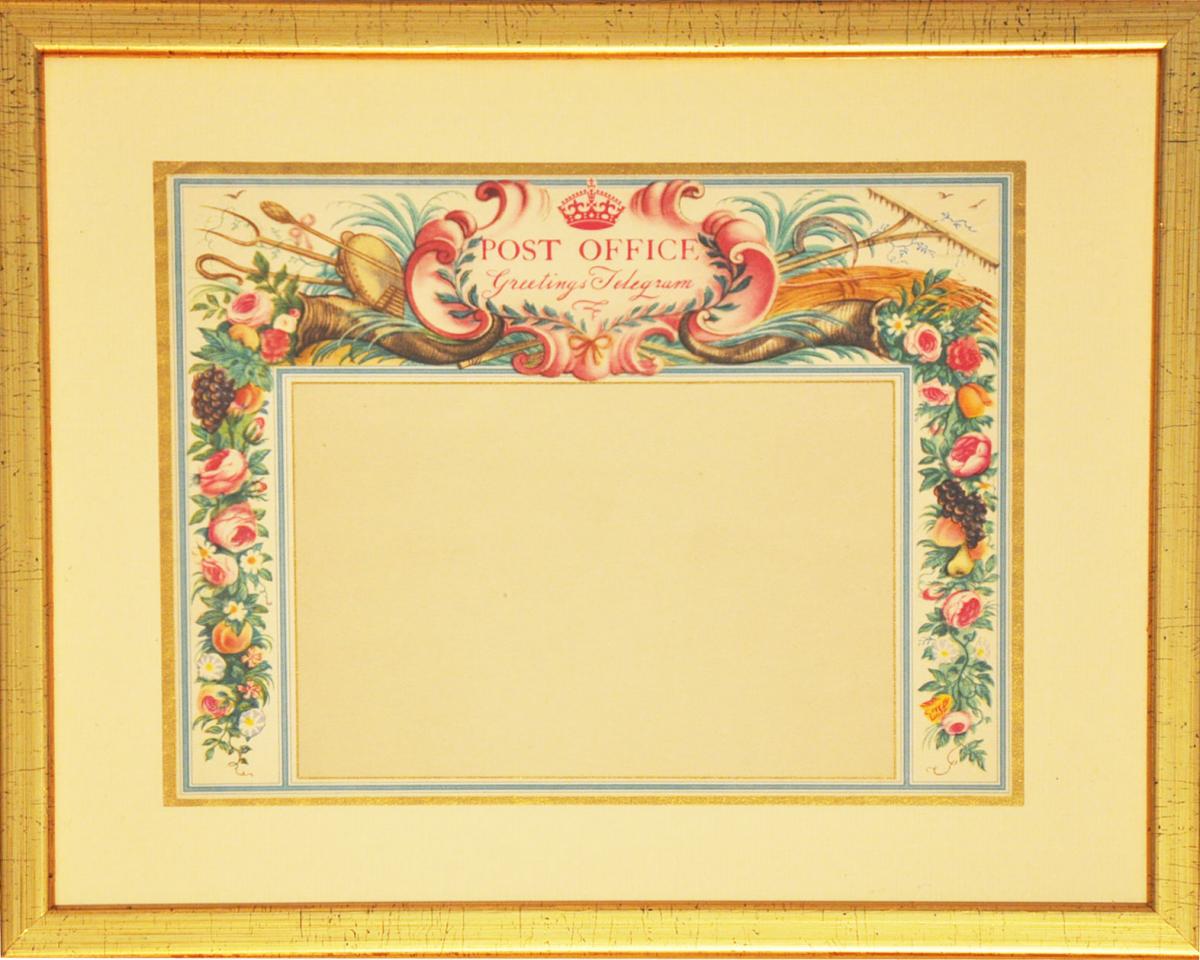
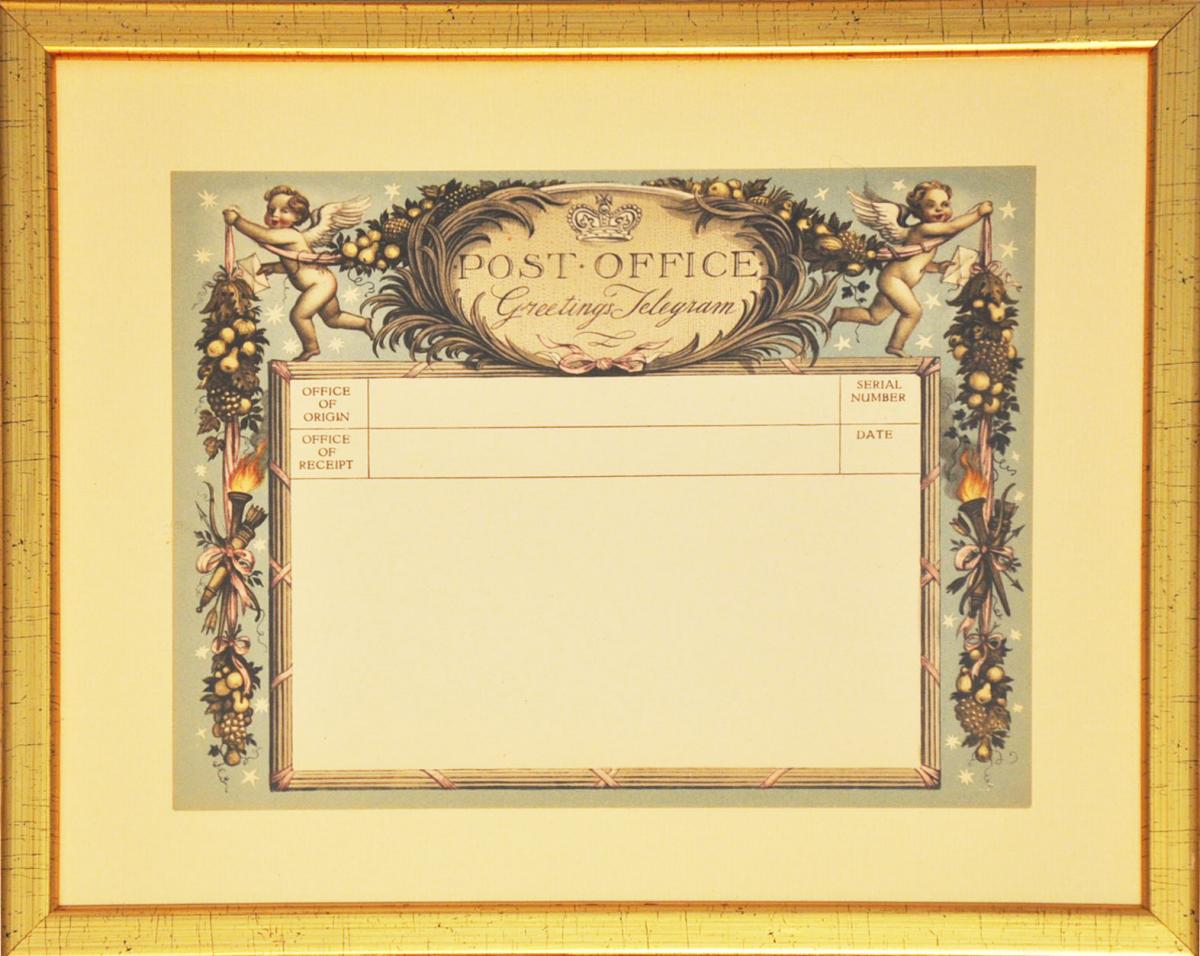
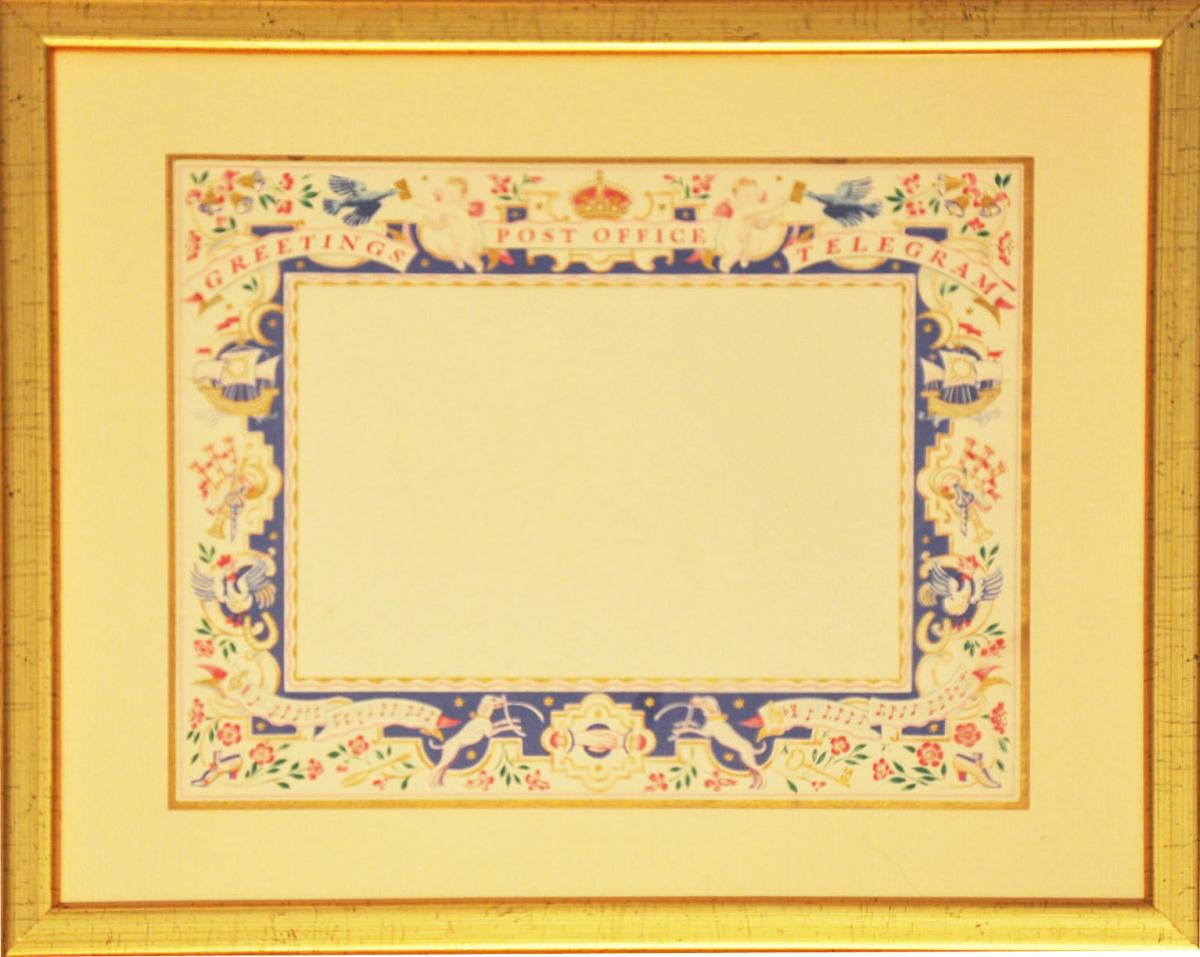
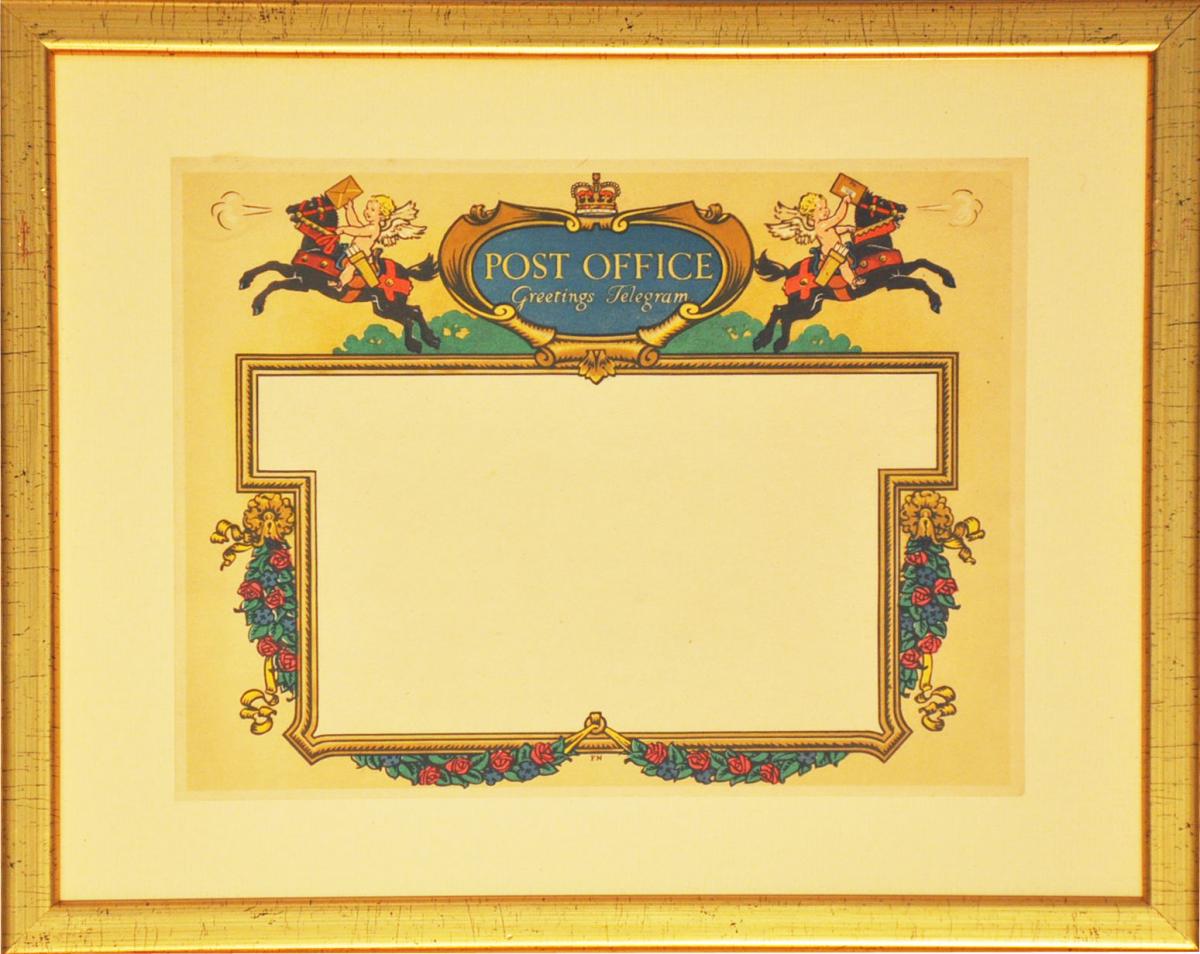
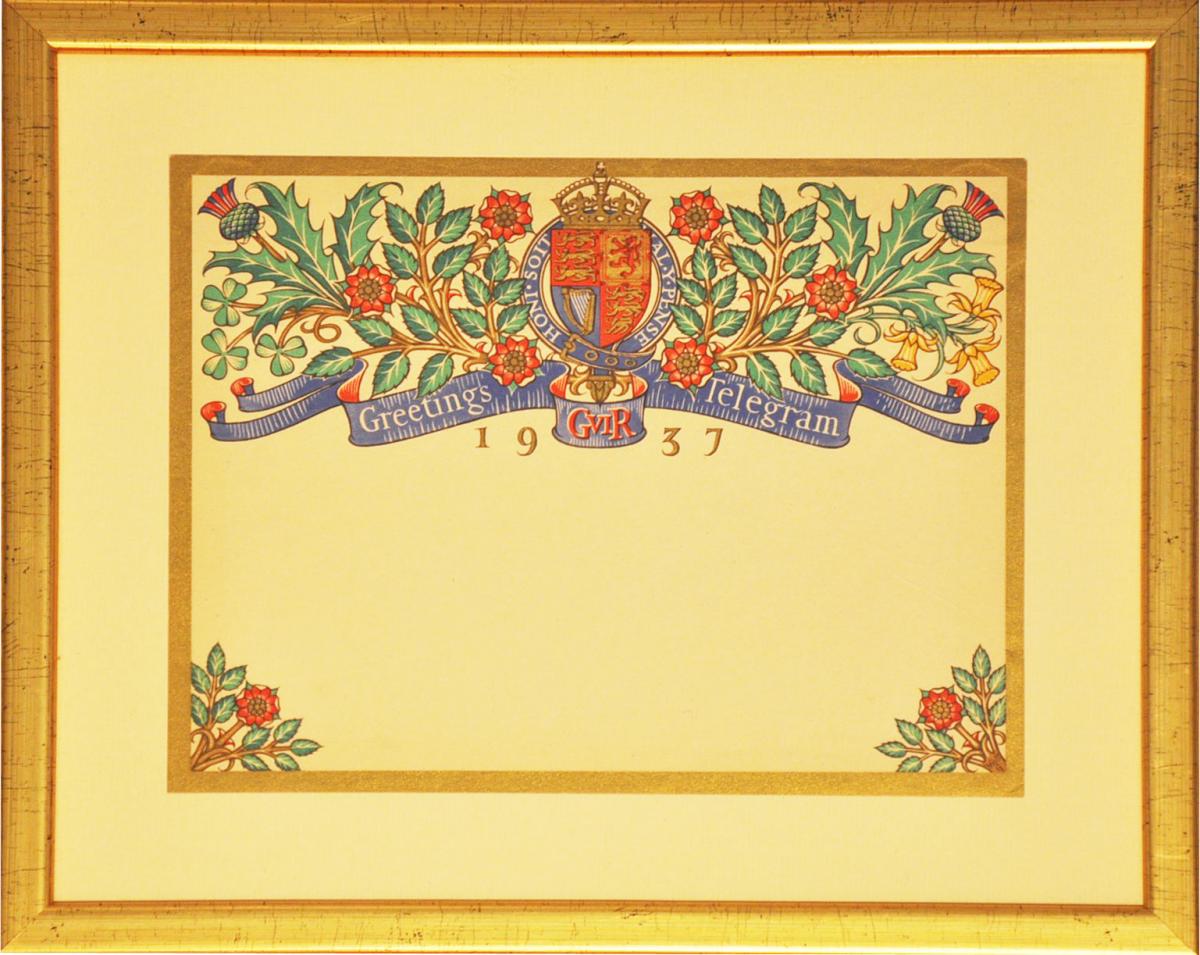
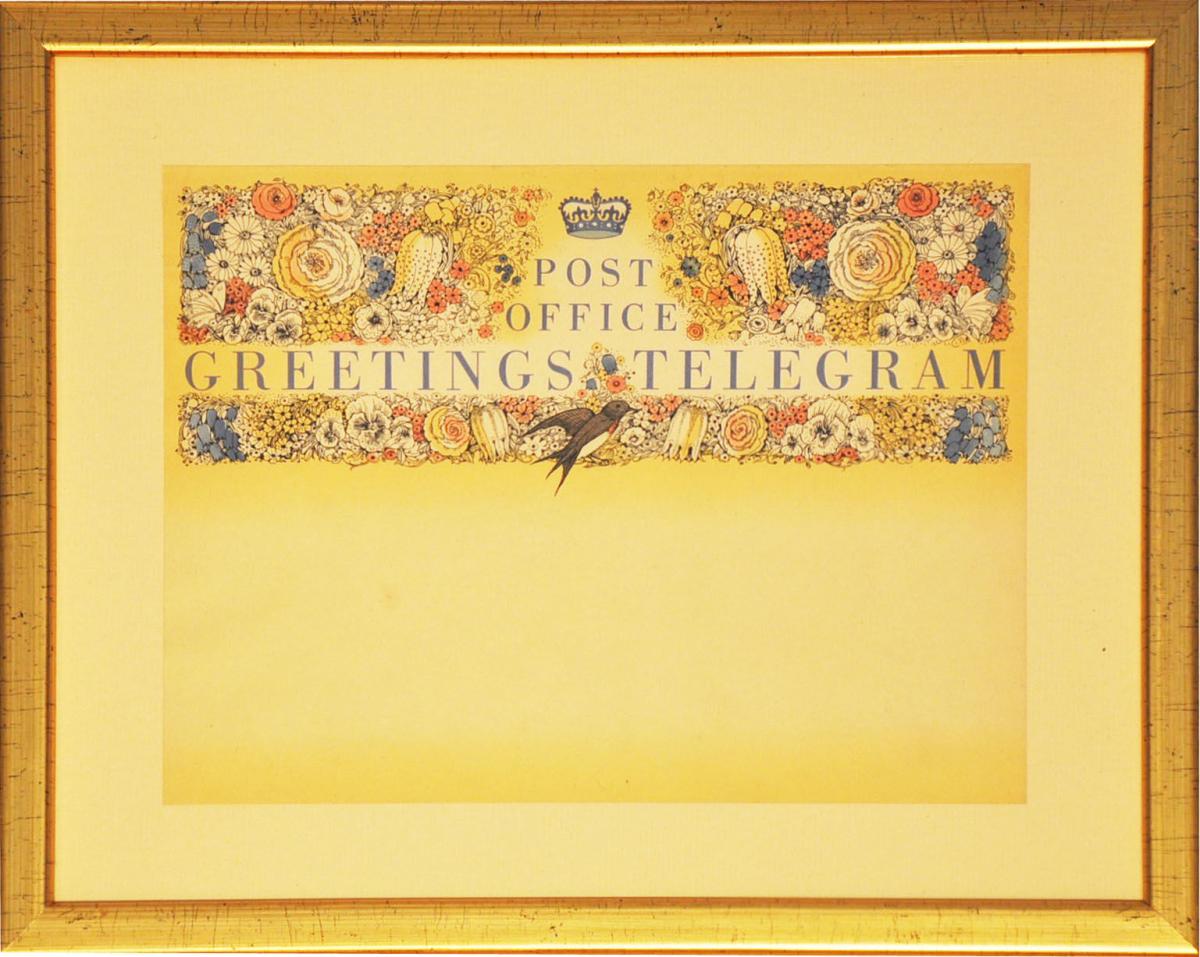
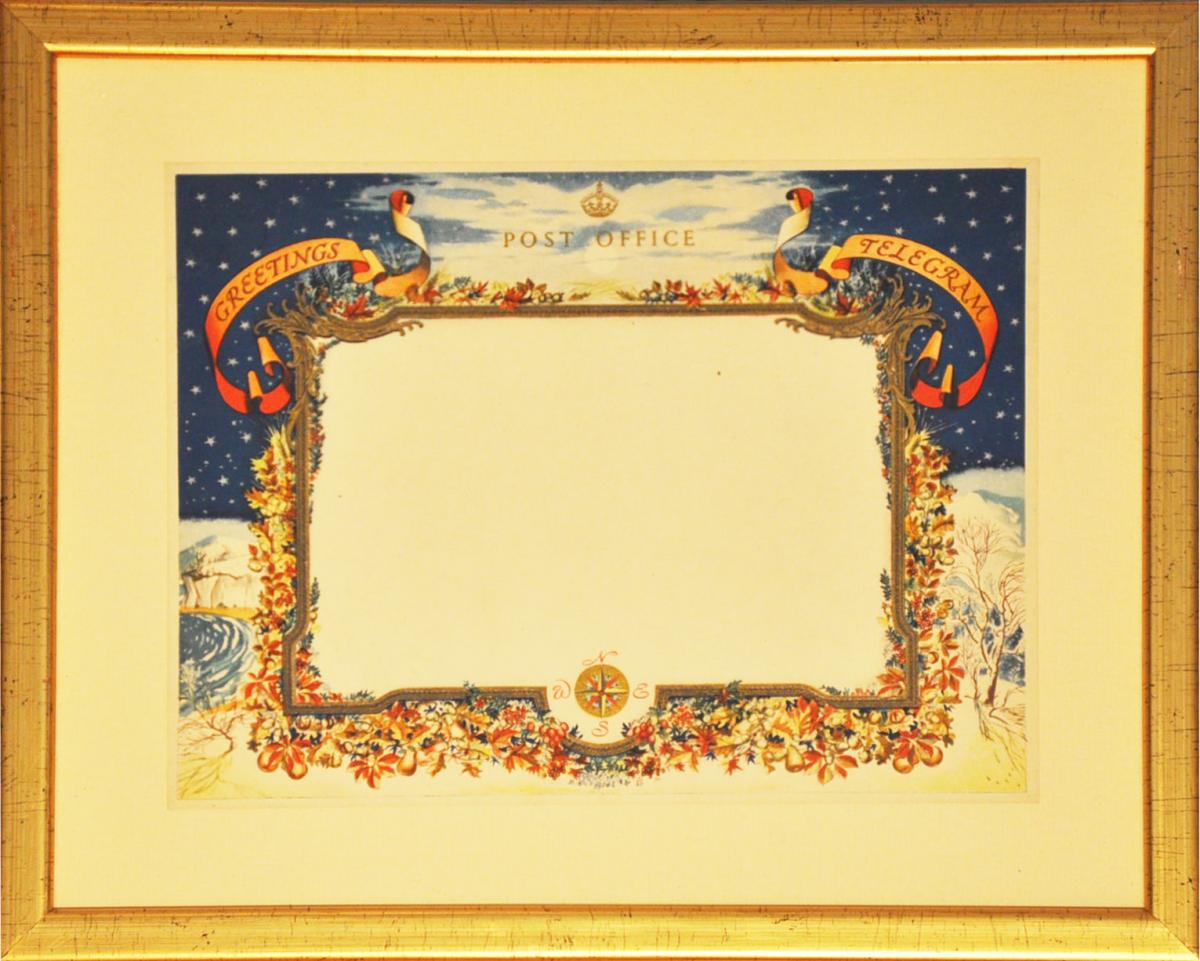
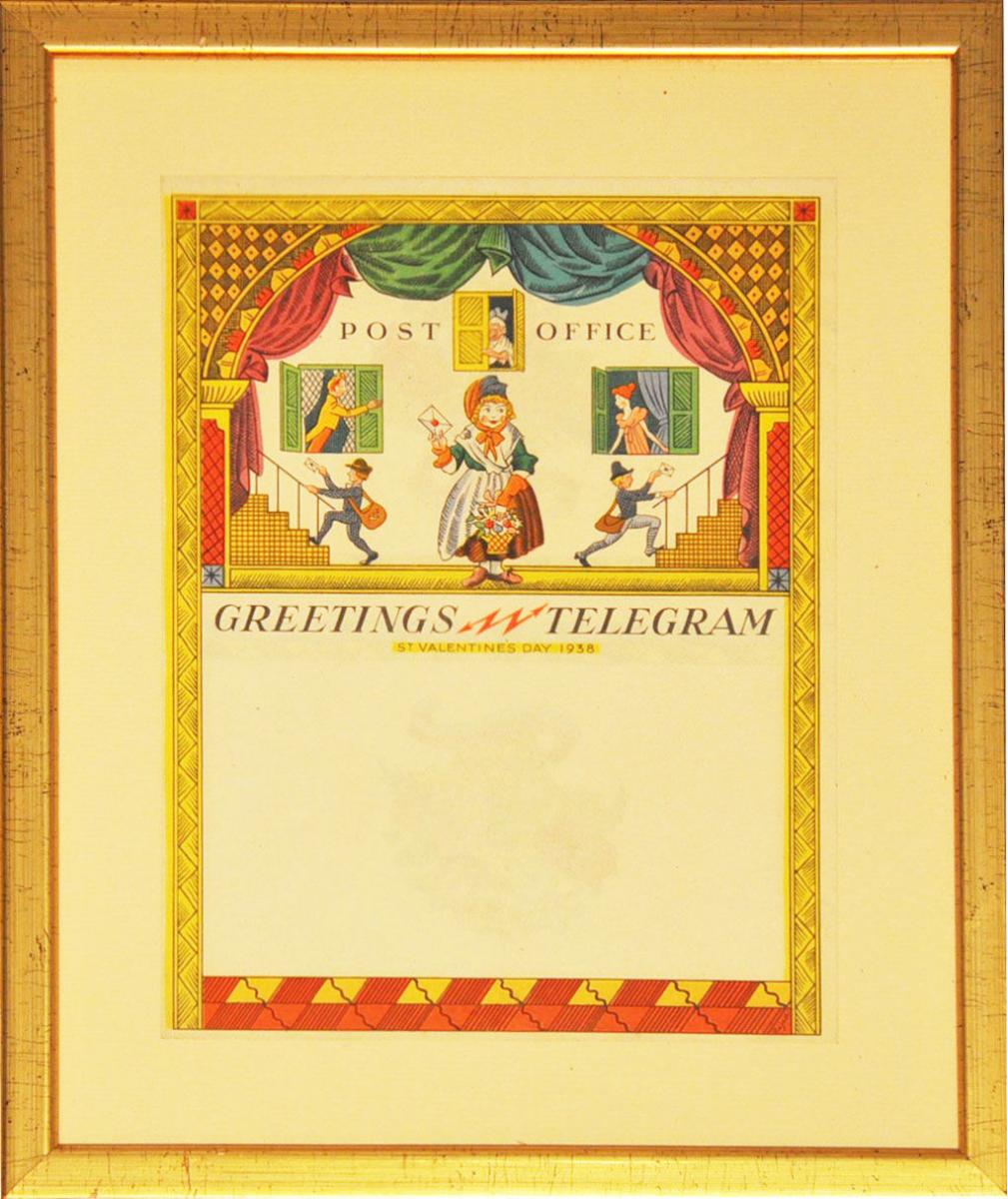
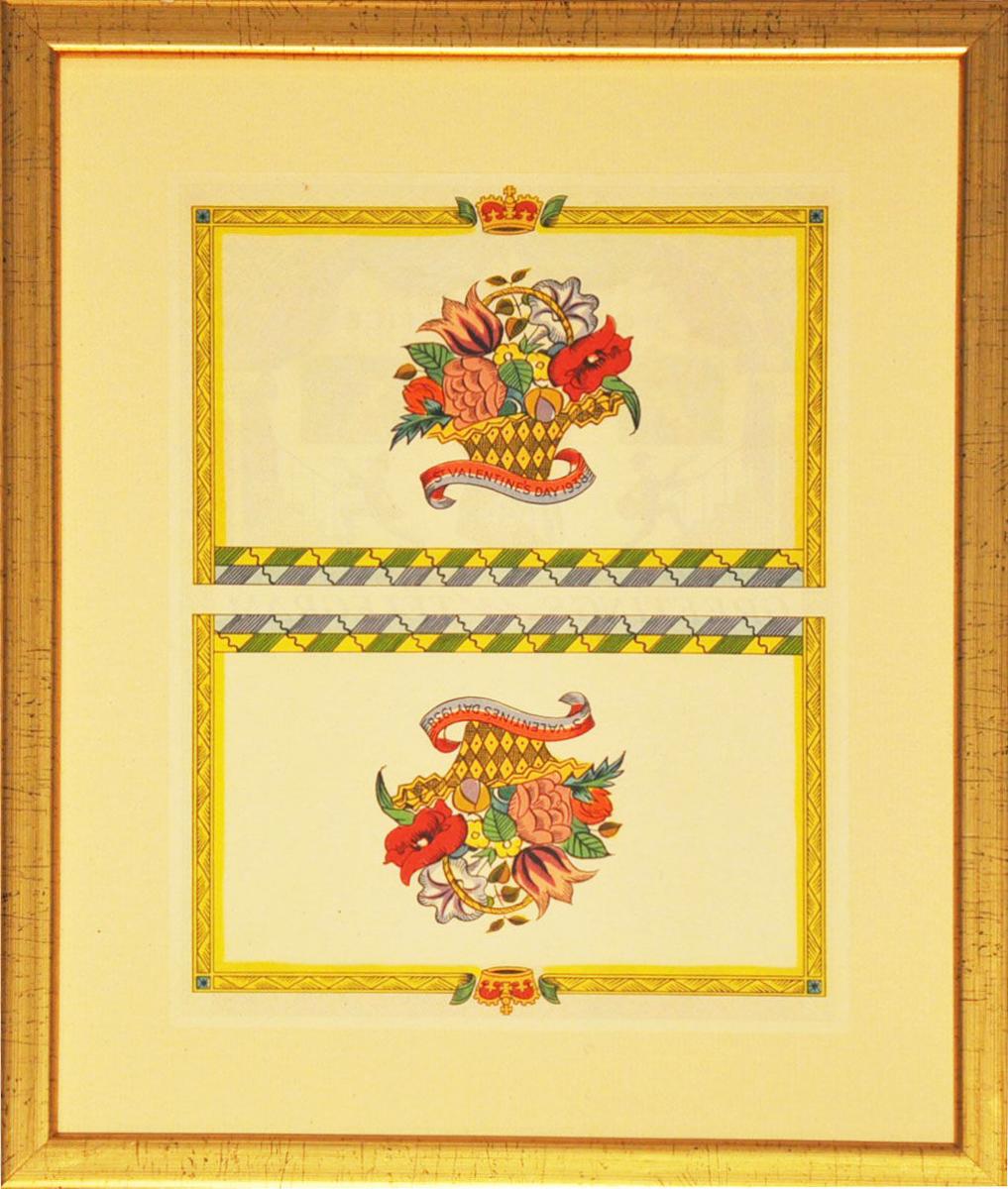
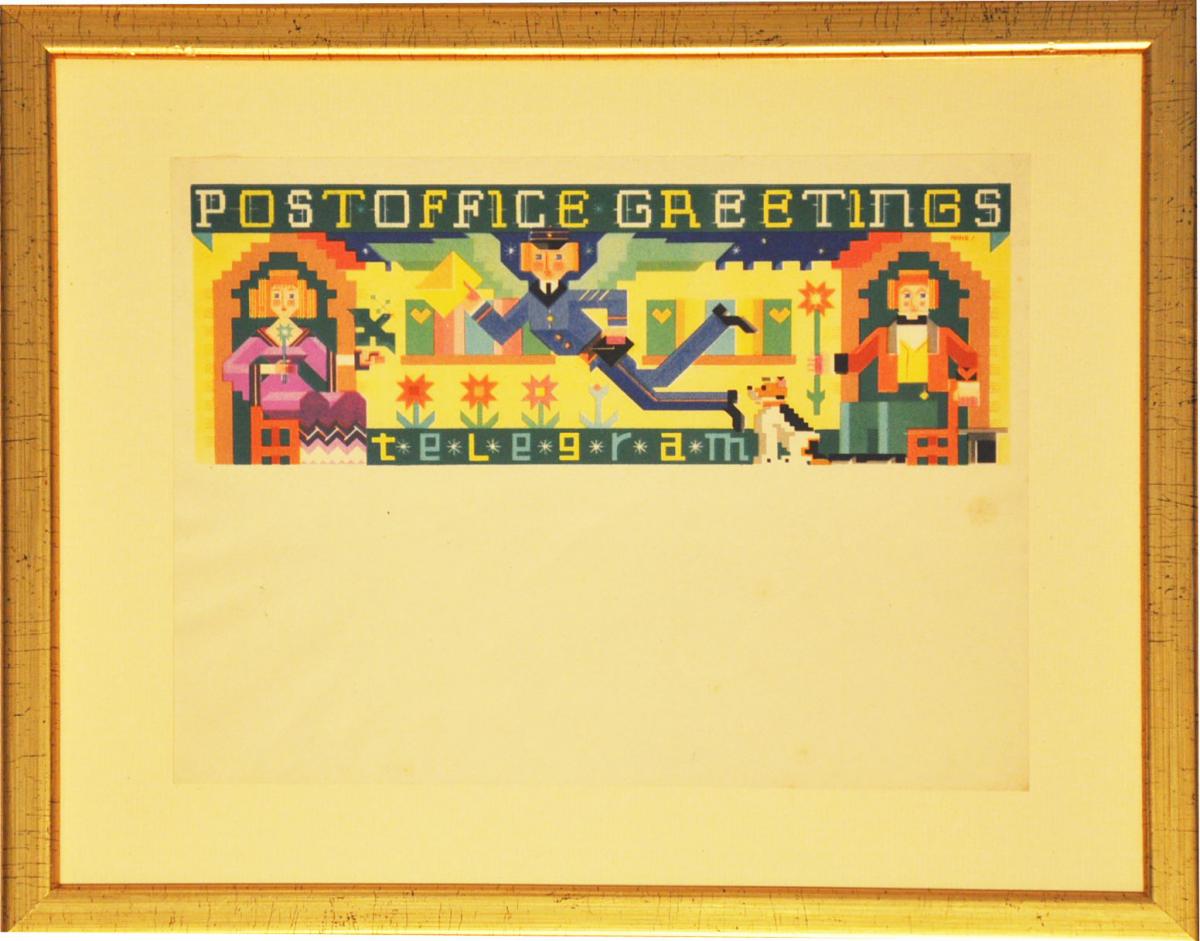
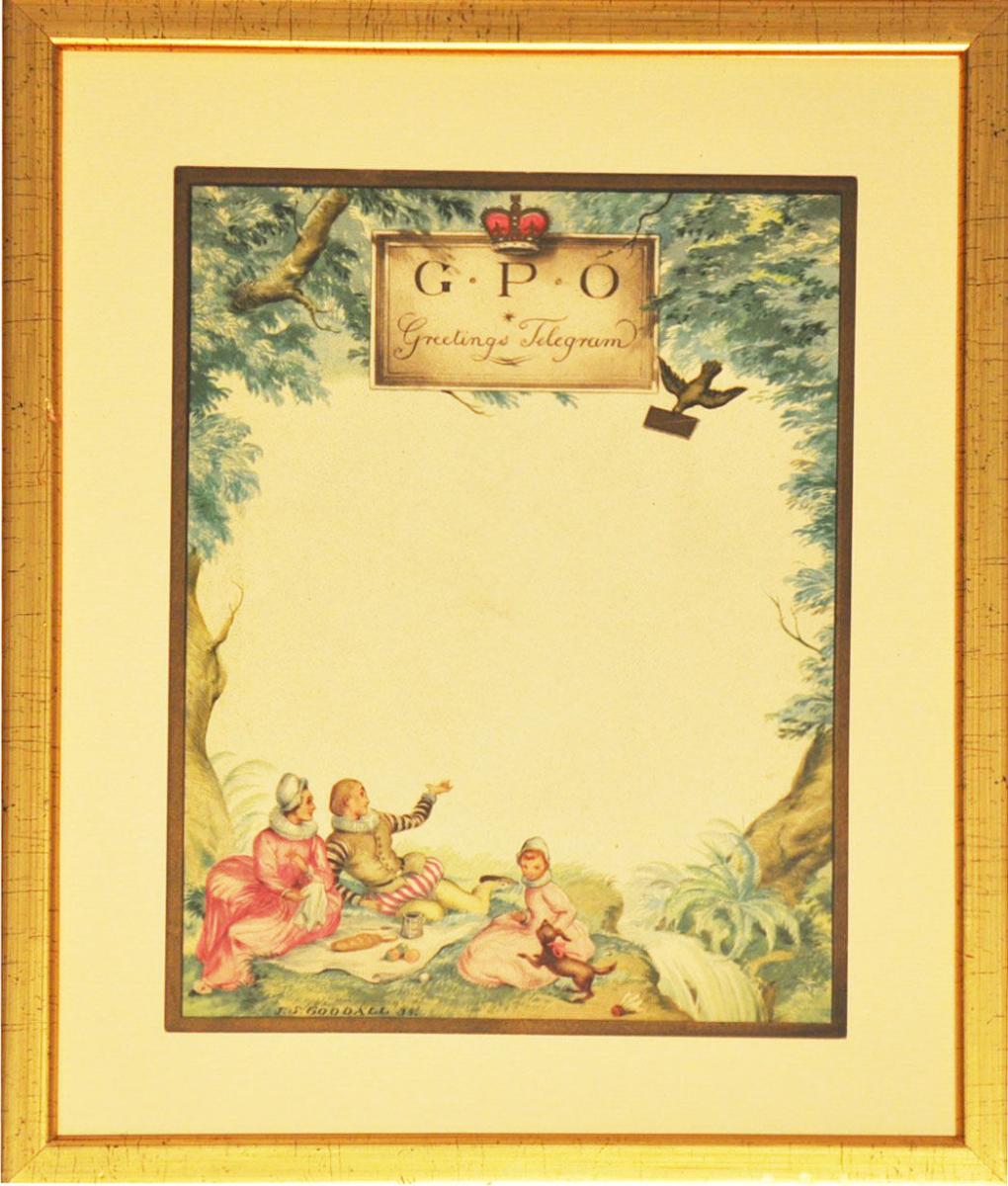
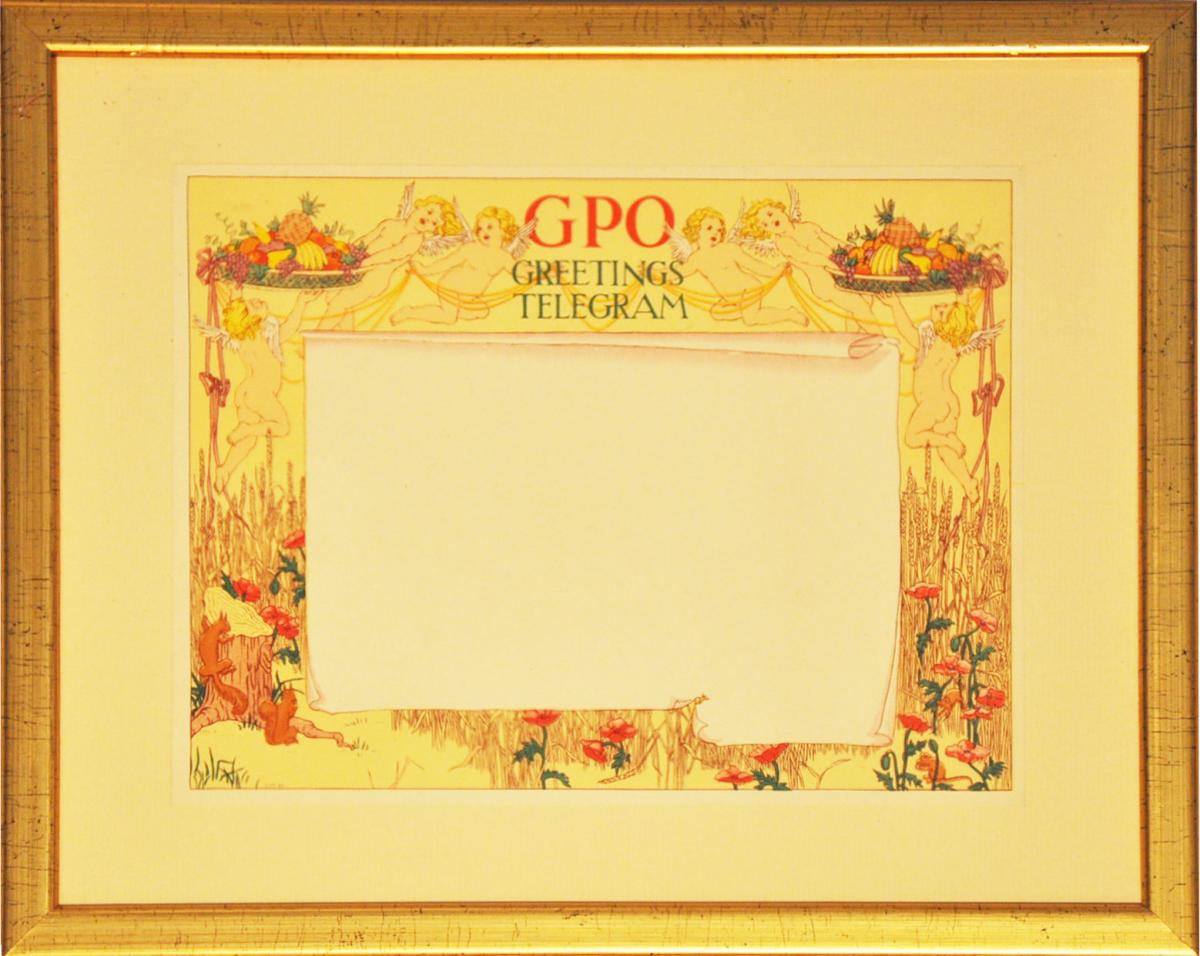
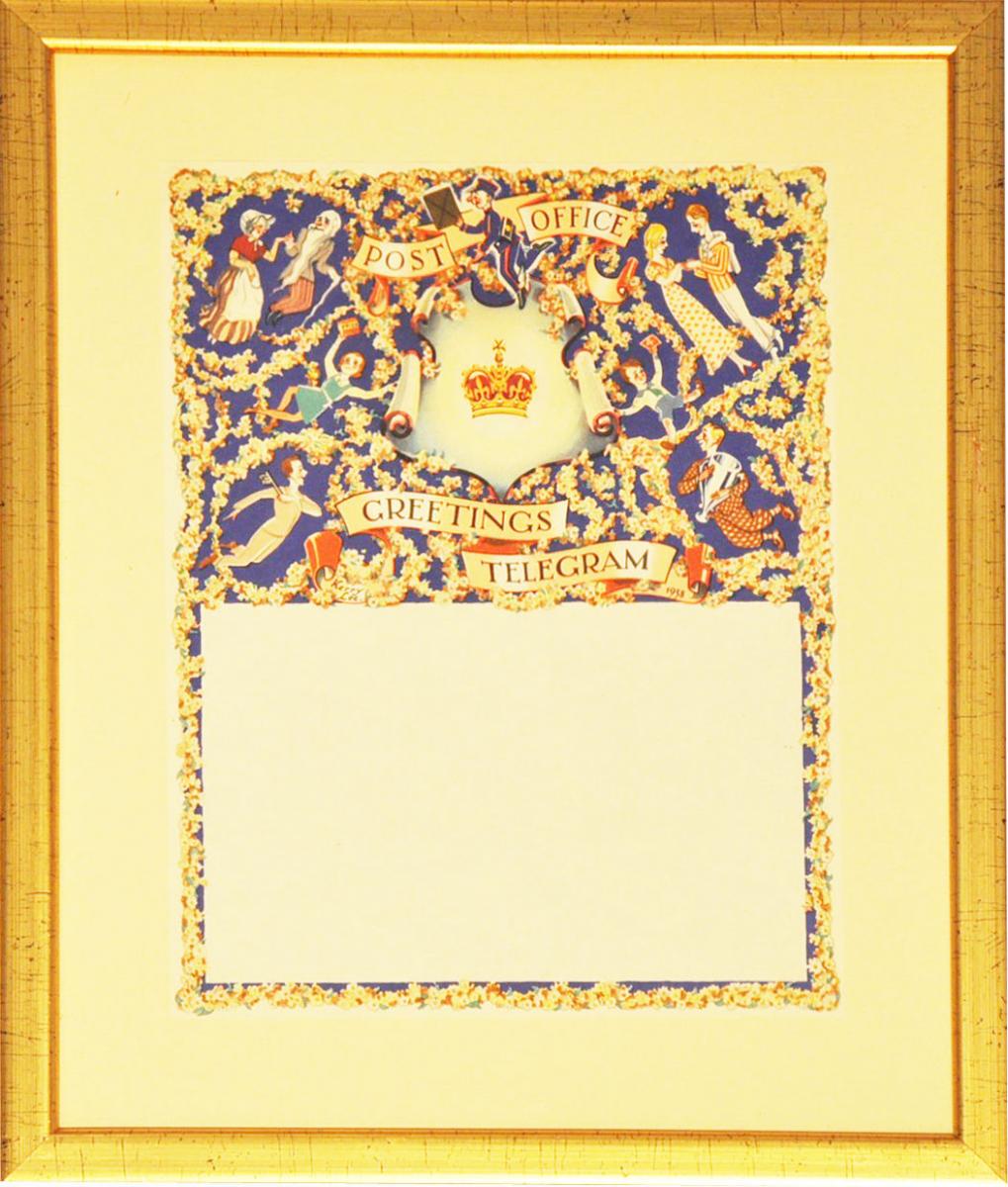
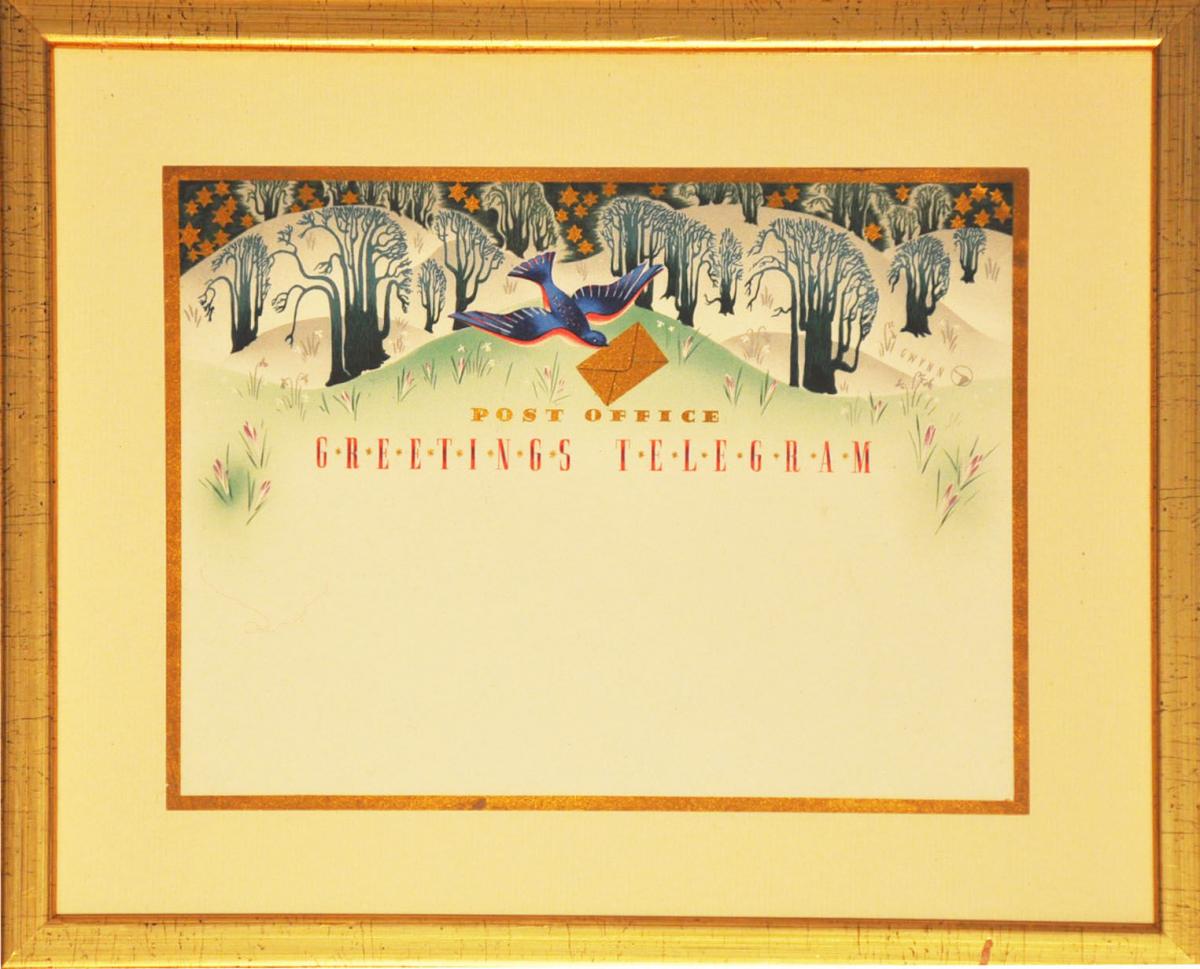
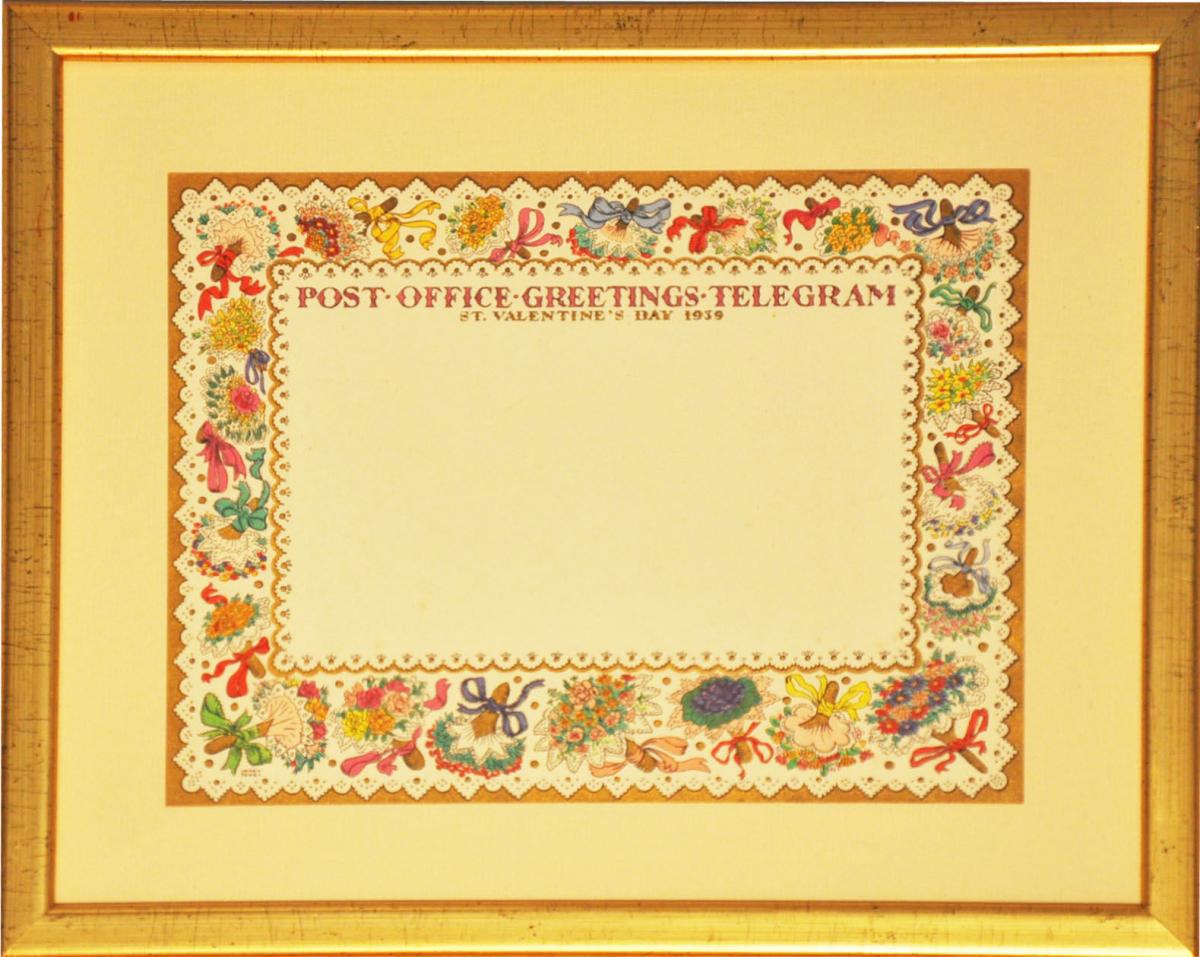
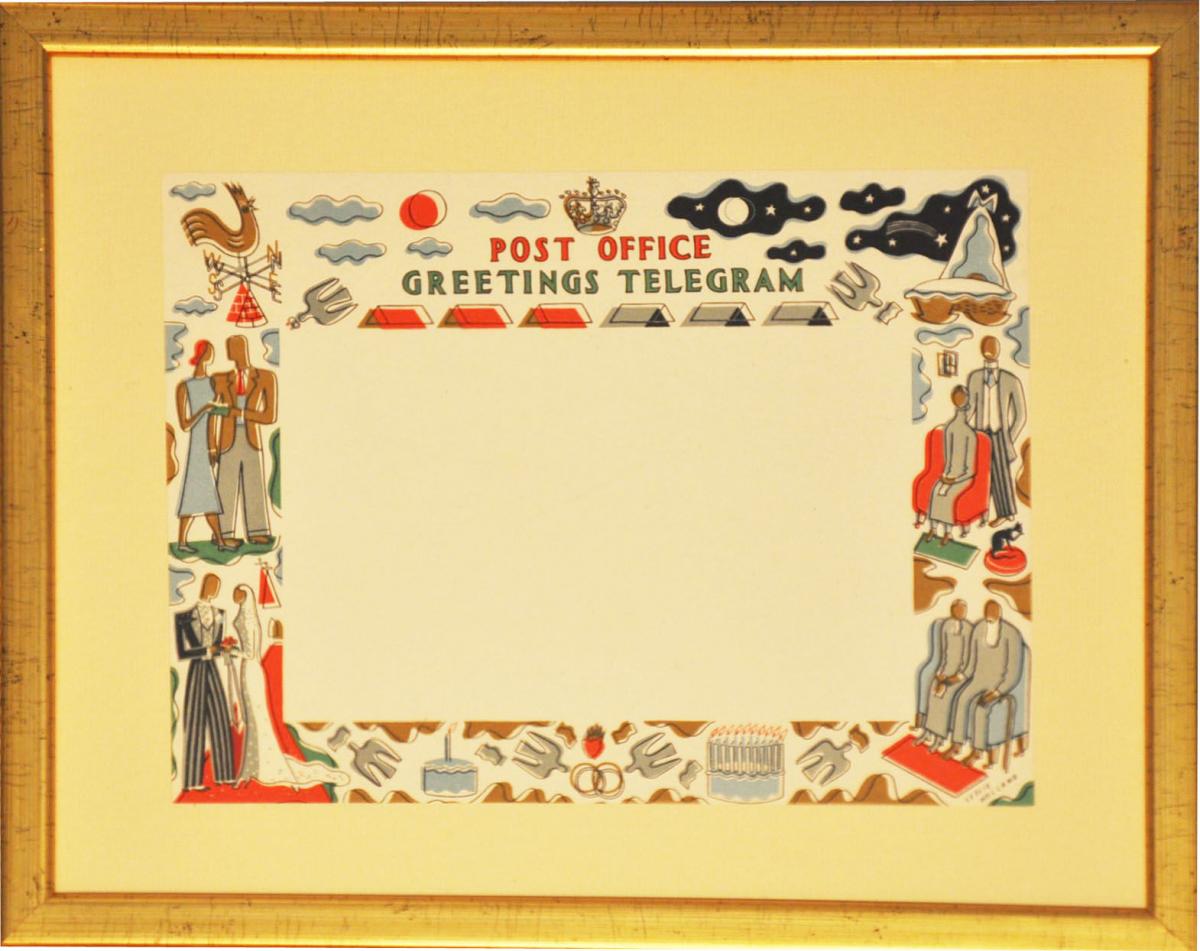
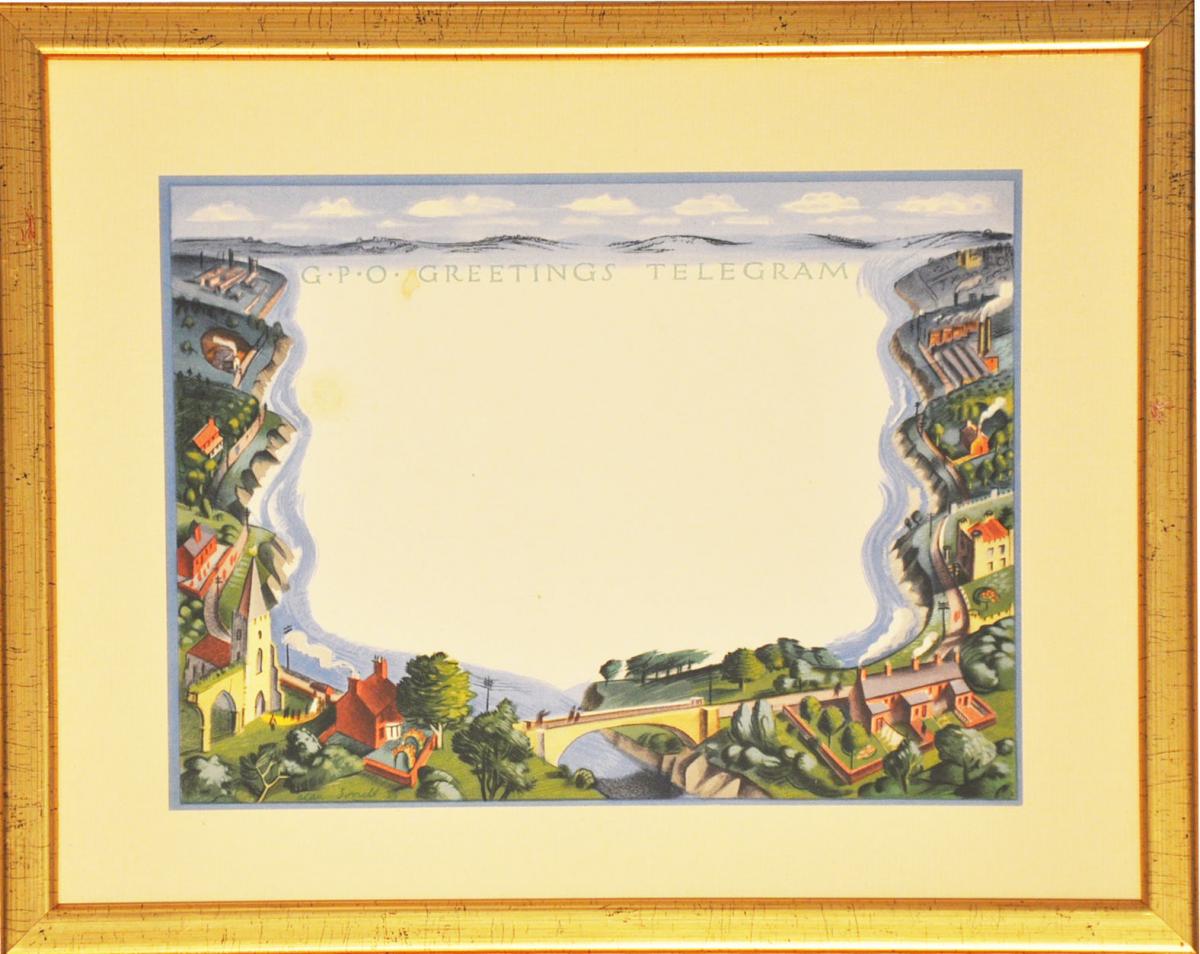
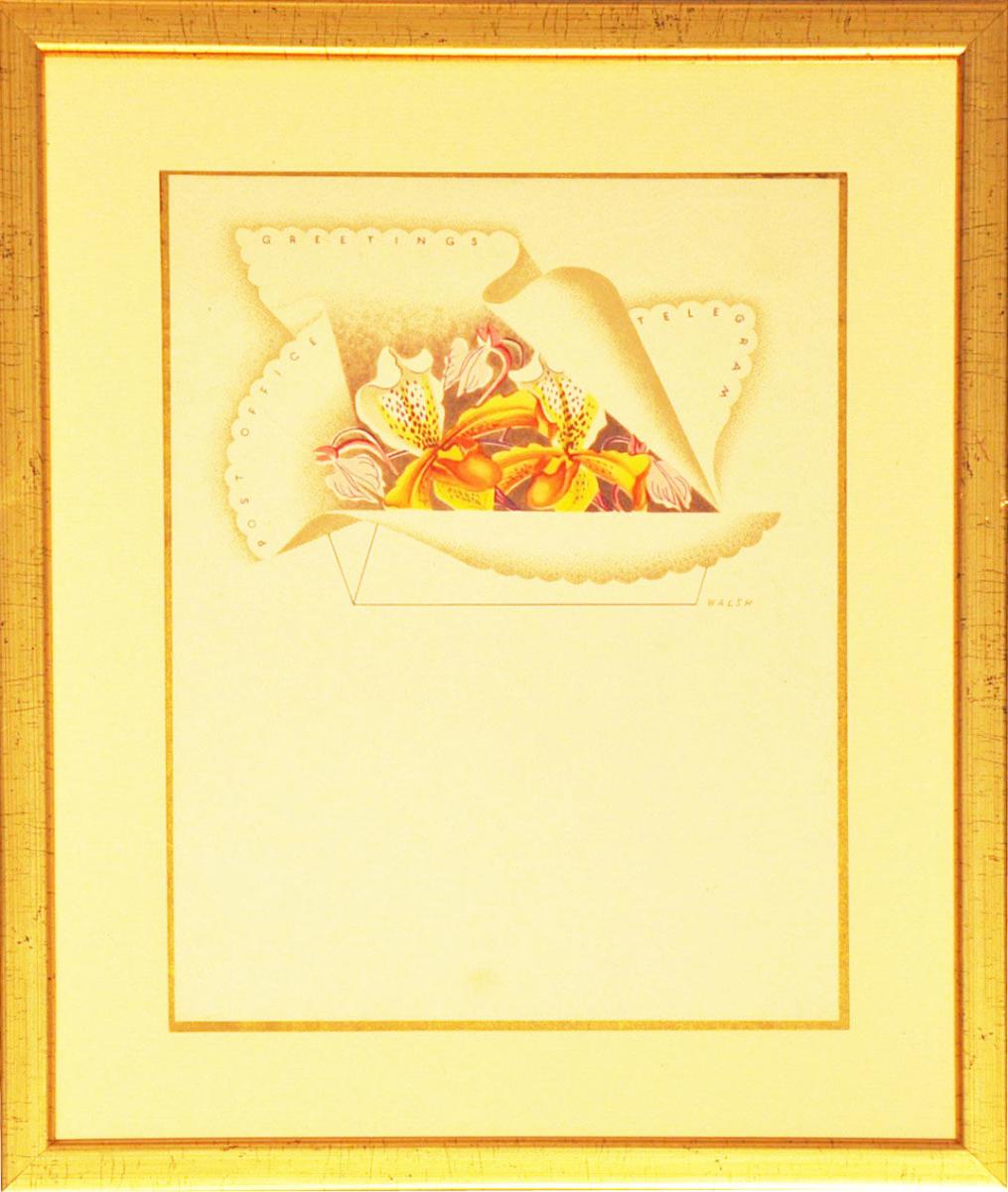
Price on application
This object is eligible for a Certificate of BADA Provenance
The BADA Standard
- Since 1918, BADA has been the leading association for the antiques and fine art trade
- Members are elected for their knowledge, integrity and quality of stock
- Our clients are protected by BADA’s code of conduct
- Our dealers’ membership is reviewed and renewed annually
- Bada.org is a non-profit site: clients deal directly with members and they pay no hidden fees
British Post Office Greetings Telegrams (1935-1978), after various artists.
photolithograph
dimensions, including frames:
33 x Telegram 9 ¾ x 11⅞ in. (24.8 x 30.1 cm.)
31 x Telegram 10 ½ x 12 in. (26.8 x 30.5 cm.)
12 x Telegram 11 ½ x 18 in. (29.2 x 45.7 cm.) and similar
12 x Telegram 9 x 11½ in. (22.9 x 29.2 cm.)
1 x Telegram 11 ¾ x 12 ¾ in. (29.8 x 32.4 cm.)
1 x Telegram 9 x 10 ⅜ in. (22.9 x 26.3 cm.)
1 x Telegram 8 x 10 ½ in. (20.3 x 26.7 cm.)
A set of ninety-one (91)
To view the complete a numbered set, along with the artist names, please go to the online catalogue at www.tomrooth.com
The historical equivalent of a text or WhatsApp message, the first telegram was sent in code in 1844 from Washington to Baltimore by Samuel Morse, asking “What hath God wrought?” By 1870 (the year that the British General Post Office nationalised the service), more than 3,000,000 telegrams were being sent annually, of which one of the shortest ever was from Oscar Wilde, who, enquiring as to sales for his new book, sent a solitary “?” to his publisher. The response was “!”.
To harness new commercial appeal, the Greetings Telegram was introduced in 1935. Costing three pence more than a standard telegram, the initiative was a great success, and nearly 25,000 were sent out in the first week.
In 1943, during the Second World War, production of the Greetings Telegram was halted due to paper rationing and exigencies. Upon its reintroduction in 1950, demand was on a steep decline due to the increasing popularity of the telephone, and also the negative association that the telegram had acquired through informing families that their loved ones had been killed or were missing in action. The final British Greetings Telegram was produced in 1978, and the overall service came to an end in the United Kingdom in 1982.
As the present collection illustrates, Greetings Telegrams were extremely popular for celebrating special events: from newborn babies to weddings; from Christmas and coronations to Valentine’s day. Indeed, more than 50,000 of Rex Whistler’s Valentine’s design of 1936 were dispatched. The Greetings Telegram was a great way for artists to increase their profile and reach an incredibly broad audience, combining - in a very Warholian manner - mass production, consumerism and art. The artists featured in this collection include Edward Ardizzone, Rex Whistler and John Strickland Goodall. However, the first Greetings Telegram was designed by Mrs Calkin James, a Post Office employee.
12 There are still a number of countries where you can still send a telegram, namely Australia, Bahrain, Canada, Germany, Israel, Japan, Mexico, Slovenia, Russia, Switzerland, and the United States. However, 15 July 2013 was the day that the telegram stopped being used on a mass-scale, when India terminated it’s service - usurped by the email and messaging.
The BADA Standard
- Since 1918, BADA has been the leading association for the antiques and fine art trade
- Members are elected for their knowledge, integrity and quality of stock
- Our clients are protected by BADA’s code of conduct
- Our dealers’ membership is reviewed and renewed annually
- Bada.org is a non-profit site: clients deal directly with members and they pay no hidden fees


